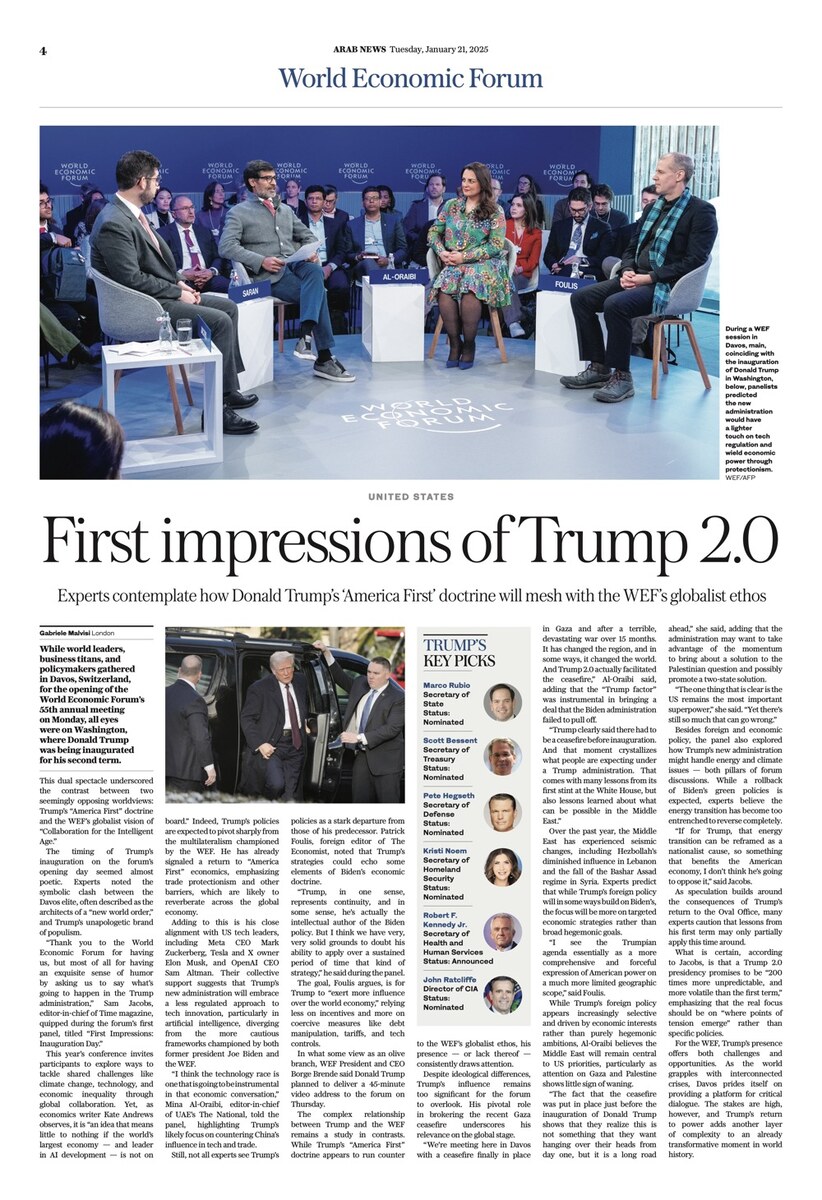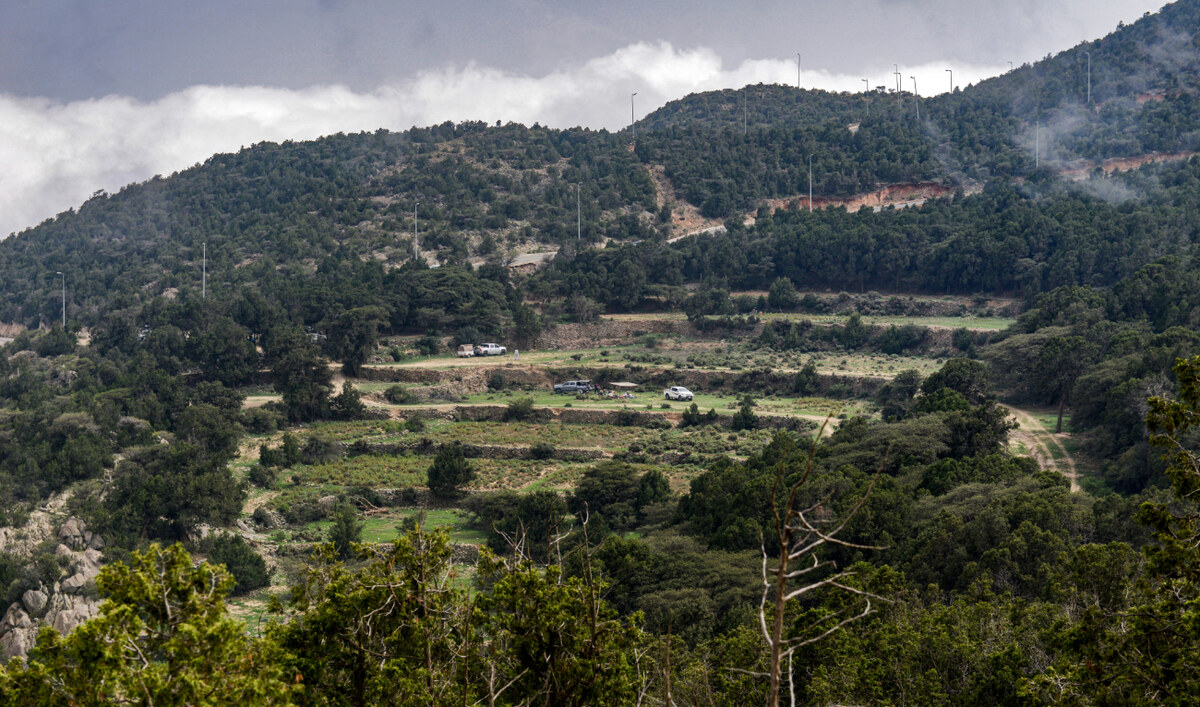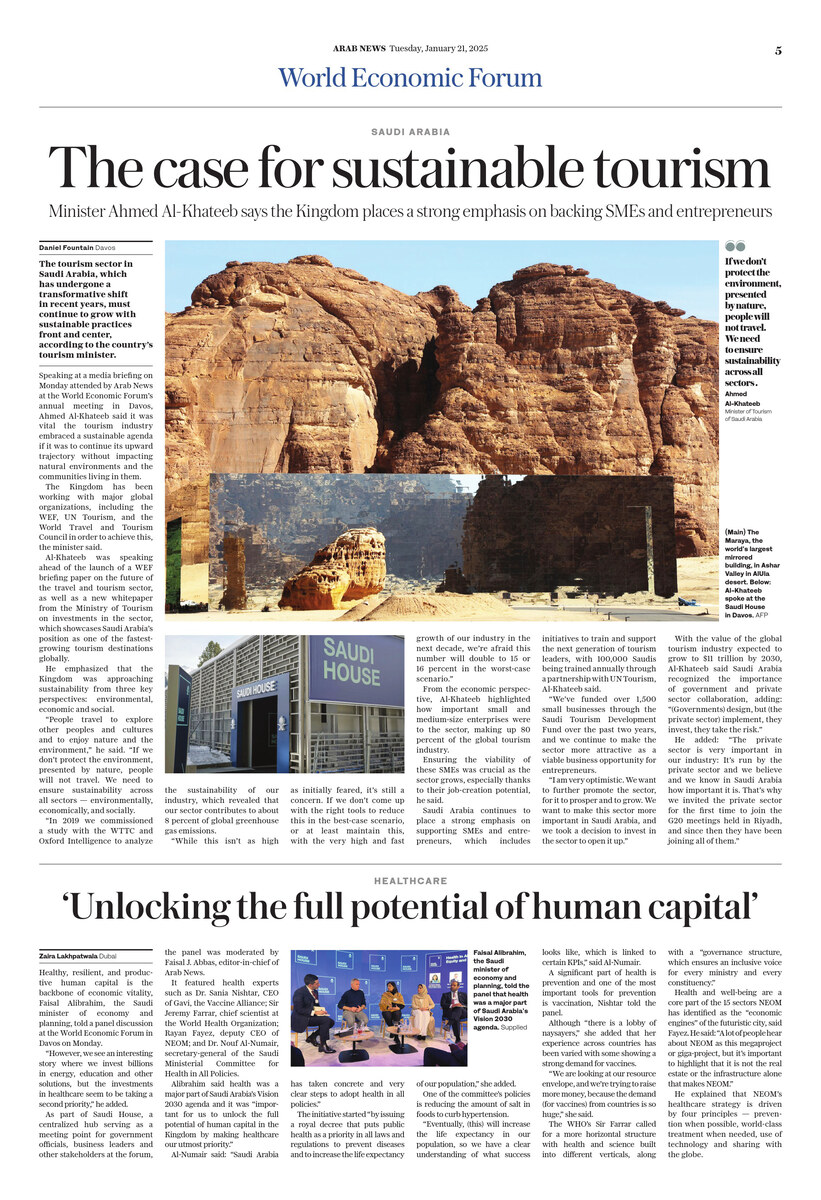RIYADH: The 16th session of the Conference of the Parties to the UN Convention to Combat Desertification is set to be a pivotal moment in the global fight against desertification and land degradation.
Scheduled for Dec. 2-13, 2024, in Riyadh, COP16 carries the theme “Our Land. Our Future.”
This event aligns with the 30th anniversary of the UNCCD and marks the first time its COP will convene in the Middle East and North Africa — a region acutely affected by the devastating impacts of desertification and drought.
Why COP16 matters
As one of the three Rio Conventions, alongside climate change and biodiversity, UNCCD plays a critical role in global environmental governance. COP16 aims to catalyze unprecedented ambition and investment to restore degraded lands and enhance drought resilience.
The conference will focus on several key objectives:
Scaling up land restoration: Accelerating efforts to restore 1.5 billion hectares of degraded land by 2030.
Strengthening drought resilience: Enhancing global and national policy frameworks to better withstand and manage droughts.
Promoting people-centered solutions: Ensuring the participation of local communities, women, and youth in land management and restoration efforts.
“The COP16 plans to combat land degradation present exciting opportunities,” said Vijay Valecha, chief investment officer of Century Financial, in an interview with Arab News.
“Land restoration will promote job growth, encourage sustainable development, and support local economies. According to the UNCCD, every dollar invested in restoring degraded lands yields between $7 and $30 in economic returns,” he added.
Valecha underscored the importance of collaboration in achieving these ambitious goals, stating: “The target to reforest 1.5 billion hectares will require close collaboration among experts, universities, NGOs, government organizations, and the private sector. This collaboration will strengthen knowledge transfer to local communities and grassroots organizations, making development more sustainable in the long term.”
HIGHLIGHTS
As the hosts, Saudi Arabia is also introducing the first-ever Green Zone at a UNCCD COP, aimed at mobilizing the scientific community, businesses, financial institutions, NGOs, and the public to deliver lasting change.
COP16 in Riyadh will host the first dual-track dialogue at a UNCCD COP, combining a negotiation track with an action agenda to address pressing environmental issues.
The high-level segment of COP16, scheduled for Dec. 2-3, will feature ministerial dialogues on drought resilience, finance, and the impact of land degradation and drought on forced migration, security, and prosperity.
Saudi Arabia’s hosting of COP16 highlights the region’s critical role in addressing desertification and water scarcity.
The MENA region is one of the areas most impacted by desertification, with some areas experiencing nearly 100 percent land degradation.
‘Missed calls from the land’
As COP16 in Riyadh approaches, the presidency announced the launch of the global campaign, “Missed calls from the land.”
This initiative, supported by a campaign film, highlighted Saudi Arabia’s commitment as the UNCCD COP16 Presidency to raise global awareness about the urgent issues of land degradation, drought, and desertification.
Currently, 40 percent of the world’s land is degraded, affecting 3.2 billion people. The UNCCD’s target aims to restore 1.5 billion hectares of degraded land by 2030.
Valecha elaborated on how land restoration will have far-reaching impacts: “Restoration also improves water retention in the soil, enhances agricultural output, stimulates the livestock economy, and increases water availability for human consumption.”
He added: “These efforts will create more green jobs, making economies more resilient in the face of climate challenges.”
Ministerial dialogues
COP16 in Riyadh will host the first dual-track dialogue at a UNCCD COP, combining a negotiation track with an action agenda to address pressing environmental issues.
The high-level segment of COP16, scheduled for Dec. 2-3, will feature ministerial dialogues on drought resilience, finance, and the impact of land degradation and drought on forced migration, security, and prosperity.
“COP16 in Riyadh is a critical moment for the international community to address land degradation, drought and desertification,” said Osama Faqeeha, deputy minister for environment and adviser to the UNCCD COP16 Presidency.
In a press release, he added: “From food and water insecurity to climate change, conflict, instability, and forced migration, how we treat our land has a profound impact on lives and livelihoods around the world.”
“In short, we need international solutions. Earlier this year, we achieved a significant milestone with the adoption of a historic resolution by the UN Environmental Assembly to halt land degradation,” Faqeeha added, speaking to Arab News.
As the hosts, Saudi Arabia is also introducing the first-ever Green Zone at a UNCCD COP, aimed at mobilizing the scientific community, businesses, financial institutions, NGOs, and the public to deliver lasting change.
Faqeeha highlighted Saudi Arabia’s initiatives: “We are determined to lead by example in land restoration and drought resilience, ultimately, showcasing how successful initiatives can create a thriving circular economy.”
He added: “Through the Saudi Green Initiative, we have already planted more than 100 million trees and rehabilitated more than 100,000 hectares of degraded land. This is part of our commitment to restore 40 million hectares through tree planting and other nature-based solutions.”
Faqeeha noted that “the Middle East Green Initiative further demonstrates our regional leadership in restoring 200 million hectares of degraded land across the region.”
“At the same time, we are engaging policymakers from around the world in a range of high-profile discussions to deliver decisive multilateral action. This dual-pronged approach is vital to accelerating the land restoration and drought resilience initiatives our planet and its people so desperately need,” said Faqeeha.
FAO’s central role
The Food and Agriculture Organization will play a key role at COP16, reflecting its commitment to sustainable land management and food security. Abdul Hakim Elwaer, FAO’s assistant director-general, emphasized in remarks to Asharq Al-Awsat the organization’s active participation, including leading discussions on transforming food systems and coordinating thematic days like Food Day and Governance Day.
Valecha tied land restoration directly to food security, emphasizing: “Land restoration is crucial for ensuring we have enough food for the future. Sustainable methods like agroecology and regenerative agriculture can improve soil health, reduce carbon emissions, and boost productivity, creating robust food supply chains that adapt to climate change.”
Strengthening drought resilience
Building resilience to drought will be a key focus of COP16, emphasizing the role of policies and technologies, with Valecha advocating for proactive measures.
“To improve drought resilience, a comprehensive framework is needed. This includes identifying vulnerable areas, implementing early warning systems, and enacting policies to prevent water overuse,” he said.
“Measures such as promoting drought-resistant crops and establishing drought management funds will provide essential protection for affected communities,” Valecha added.
The integration of local and indigenous knowledge into these efforts is equally vital.
Valecha said: “Indigenous communities, as key stakeholders in land restoration, possess deep understanding of their ecosystems. Their involvement can significantly reduce deforestation rates, as seen in countries like Nepal and regions in the Americas.”
A regional and global impact
Saudi Arabia’s hosting of COP16 highlights the region’s critical role in addressing desertification and water scarcity.
The MENA region is one of the areas most impacted by desertification, with some areas experiencing nearly 100 percent land degradation. COP16 will provide an opportunity for regional countries to showcase their resilience strategies and contribute to shaping global policies.
“The Gulf and MENA region, owing to its demographics, have been at the center of environmental challenges,” said Valecha. “However, initiatives such as drought and disease-resistant crop varieties by GCC nations demonstrate the region’s commitment to combating these challenges.”
Moreover, COP16 will offer a platform to showcase innovative solutions, from advanced land management practices to cutting-edge technologies in water conservation.
Youth and community engagement
For the first time, COP16 will see Saudi Arabia host a Green Zone alongside the formal Blue Zone program. This inclusive public space will promote environmental awareness through family-friendly and cultural activities.
The emphasis on inclusivity is central to COP16, with forums and training sessions for youth, women, and indigenous communities. The Green Zone will host discussions on sustainable land stewardship while featuring workshops, exhibitions, and interactive art installations.
Valecha highlighted the potential of youth engagement at COP16: “Selected youth negotiators will participate in the Youth Negotiators Academy, equipping them with skills to advocate for actionable policies. These efforts promote intergenerational dialogue and foster solutions for sustainable livelihoods.”
“Globally, women account for nearly 50 percent of agricultural labor in small-scale farming. Gender-inclusive policies across the value chain are critical to the success of restoration initiatives,” said Valecha.
Innovative solutions and partnerships
COP16 is expected to unveil groundbreaking initiatives, with Valecha anticipating significant developments. He added: “The conference could lead to the establishment of financing mechanisms and restoration funds. Cross-border partnerships can help maintain the Land Degradation Neutrality target and prevent further degradation of land resources.”
Valecha emphasized the critical role of the private sector in achieving COP16’s goals, highlighting the potential contributions of international financial institutions and private companies. He pointed to favorable loans, green bonds, and funding for sustainable practices such as no-till farming and rotational grazing as key areas of support.
He also stressed that public-private partnerships are vital for scaling up land restoration efforts.
A call to action
As COP16 commences, the world stands at a crossroads. This conference is not just a meeting but a call to action — a chance to turn ambition into tangible solutions for land, livelihoods, and the planet’s future.


































